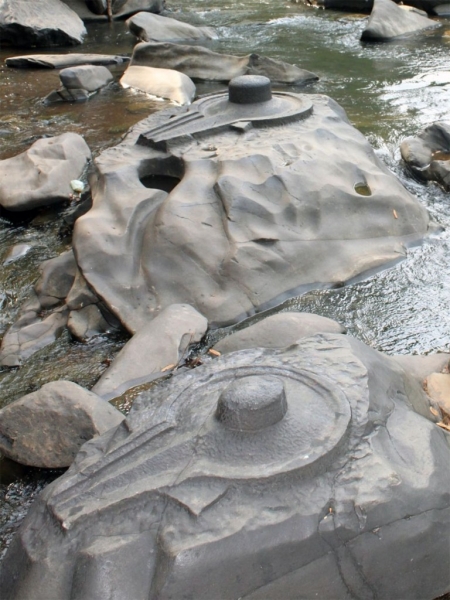Ancient Carved Shiva Lingas – Shamala River, Karnataka, India.
When dry weather causes the Shalmala River in Karnataka State, India to drop. When this happens thousands of stunning carvings are exposed in the rock bed. The carvings are of male and female sexual symbols – Linga and Yoni – and of Nandi, the Hindu God Shiva’s bull mount.
The place is Sahasralinga locate in Karnataka, India. Sahasralinga Means “thousand Shiva Lingas” as around this many Linga are carved on rocks in and around the river. On Shiva’s feast day, Mahastrashivaratri, thousands of his worshipers visit the site to worship him.
“During Shivratri, thousands of pilgrims visit Sahasralinga offering Pujas. “Each Linga has an individual bull carved facing towards them. No one really knows when or who carved these Lingas but it is speculated that the King of Sirsi, Sadashivaraya, may have ordered their construction during his reign from 1678 to 1718.”
What is behind Lord Shiva being represented as a ‘Linga?’ The popular belief is that the Shiva Linga or Lingam represents the phallus, the emblem of the generative power in nature. According to Swami Sivananda, this is not only a serious mistake, but also a grave blunder.

Shiva Linga: The Symbol for Shiva
In Sanskrit, Linga means a ‘mark’ or a symbol, which points to an inference. Thus the Shiva Linga is a symbol of Lord Shiva – a mark that reminds of the Omnipotent Lord, which is formless.
Shiva Linga speaks to the devotee in the unmistakable language of silence, and it is only the outward symbol of the formless being, Lord Shiva, who is the undying soul seated in the chambers of your heart, who is your in-dweller, your innermost self or ‘Atman,’ and who is identical with the supreme ‘Brahman.’
The Linga as a Symbol of Creation
The ancient scripture Linga Purana says that the foremost Linga is devoid of smell, colour, taste, etc., and is spoken of as ‘Prakriti’ or Nature itself. In the post-Vedic period, the Linga became symbolical of the generative power of Lord Shiva.
The Linga is like an egg, and represents the ‘Brahmanda’ or the cosmic egg.
